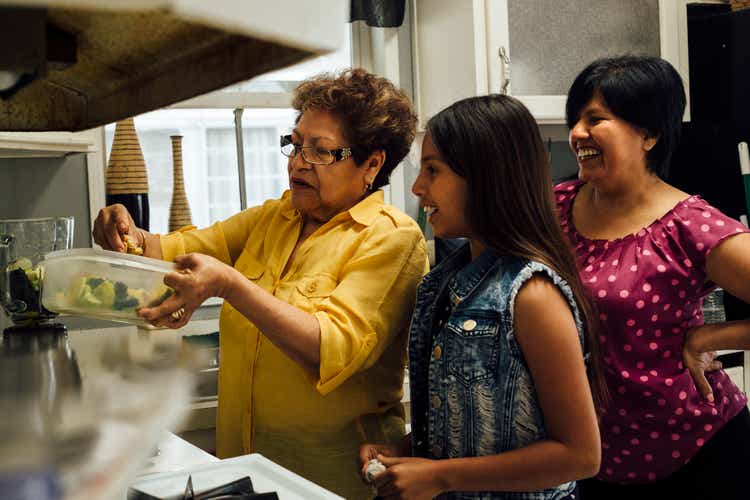Waldenström's Macroglobulinemia (WM)

In this page
- What are the symptoms of Waldenström's Macroglobulinemia (WM)?
- How common is Waldenström's Macroglobulinemia (WM)?
- Treatment and Care
- Living with Waldenström's Macroglobulinemia (WM)
- What to ask your doctor?
- Janssen & Waldenström's Macroglobulinemia (WM)
- Glossary
- Patient advocacy groups and external sources

It’s normal to feel exhausted due to stress or after a long day, and often a decent night’s rest and taking some time to relax will make you feel much better. But imagine feeling tired all the time, with plenty of sleep and rest not helping. This is an everyday reality for people with Waldenström's Macroglobulinemia (WM). They regularly experience extreme fatigue, among other symptoms, which can have an impact on their everyday life and relationships.1
Understanding WM and the treatment options available for you can be a big help in learning to live with the condition.

Waldenström's Macroglobulinemia (WM) is a rare type of cancer that affects your white blood cells. It’s also known to be a slow-growing form of Non-Hodgkin’s Lymphoma,2 a term used for different types of blood cancer that share the same characteristics.3
With WM, abnormalities grow in the B-lymphocytes, a type of white blood cell that develops in the bone marrow and makes antibodies to protect us against disease and infection.4 When you have WM, your bone marrow produces too many abnormal white blood cells, eventually crowding out healthy red and white blood cells, and platelets (blood-clotting cells),5 making you more susceptible to infections. The abnormal cells overproduce a protein called immunoglobin M (IgM), an antibody that helps the body fight infections and diseases.6 When too much IgM is produced, the blood thickens,2 obstructing circulation and making it difficult for organs and tissue to function properly.6
What are the symptoms of Waldenström's Macroglobulinemia (WM)?
Often, people with WM do not experience symptoms when diagnosed. It’s not uncommon for the disease to be detected while being examined for a different condition or after a routine blood test,2 so, understandably, the diagnosis can come as a shock if you have not been feeling unwell.
There are signs that can point towards WM, but they can easily be mistaken for other conditions, making it difficult to catch the disease early. The most common symptom is anaemia due to a lack of red blood cells or the blood thickening.7 Shortness of breath, sudden weight loss, night sweats and recurring fevers6 can also be indicators of WM.
If there’s a large amount of IgM protein in your bloodstream, it can slow down your blood flow, also known as hyperviscosity, which can result in nosebleeds, vision problems, dizziness or headaches, and drowsiness.8 The IgM protein can also affect the small nerves in hands and feet, creating a pins-and-needles feeling.8
It’s important to see your doctor as soon as you experience any of these symptoms, as they can also be linked to different subtypes of Non-Hodgkin’s Lymphoma or other health conditions.6
In addition to a full physical exam, your doctor may conduct the following tests, based on your overall health, symptoms and the results of earlier medical tests:9
- Blood tests: to measure the level of IgM protein, red and white blood cells, and platelets in your blood.10
- Bone marrow biopsy and other biopsies: a bone marrow biopsy can detect abnormal B-cells, while other biopsies allow medical teams to examine affected tissue in more detail.10
- CT or MRI scan: used to determine the size of the cancer and whether any other organs have been affected.9
How common is Waldenström's Macroglobulinemia (WM)?
Waldenström's Macroglobulinemia (WM) is a very rare type of cancer. Incidence rates in Europe for men and women are 7.3 and 4.2 per million respectively.11
Unfortunately, the cause for WM is still unknown, but research has been able to highlight some – uncontrollable - factors that can influence the development of the disease:
- Gender: more common in men12
- Age: 60 years and older12
- Race: Caucasians are more likely to develop WM12
Treatment and Care
Unlike many other cancers, there is no standardized staging system for WM. Instead, your doctors will look at different factors13 to determine your prognosis, including:
- Your age and health
- Level of IgM protein in your blood
- The severity of anaemia and other symptoms
- The extent of lymph node or spleen enlargement
If you are asymptomatic, doctors may advise monitoring the progression of the disease – also known as ‘watchful waiting’ – to avoid you having to experience side effects brought on by treatment.14
If your doctors decide treatment is needed, they could advise:15
- Plasma exchange to relieve the symptoms of hyperviscosity
- Chemotherapy
- Targeted therapy to block the cancer from spreading and limit damage to healthy cells
- Bone marrow/stem cell transplantation
- Clinical trials
It’s important that you follow a treatment plan with which you are fully comfortable and that is tailored to your unique needs, to optimise your quality of life as much as possible. Don’t hesitate to ask your doctor any questions you may have about the treatment plan advised to you.
Living with Waldenström's Macroglobulinemia (WM)
WM is typically a slow-growing cancer and it’s possible to have a good quality of life living with the condition.1
WM suppresses the immune system, which can be further worsened by treatment,1 so it’s important to look after yourself and minimise the chance of getting an infection. Wash your hands regularly and try to avoid contact with people who are unwell. You can also ask your doctor about possible vaccinations that could help prevent infections and diseases, or that your loved ones can get to protect your health.16 Stay hydrated, adopt a healthy diet and try to exercise if possible. Don’t neglect self-care and allow yourself enough time to sleep and relax.
Be honest with loved ones and your doctor about how the condition affects you both, mentally and physically. Ask your doctor for more information on services that can support with matters such as childcare and work. Counselling can also be a great support to help you cope with living with WM.
What to ask your doctor?
The list below includes example questions to help start a conversation with your health care provider. There may be other relevant questions based on your symptoms, stage, and medical history that are not listed here.
- How advanced is my disease, and what can I expect?
- What are my treatment options? How much time do I have to decide?
- How long will the treatment take?
- What are the possible side effects? How can I manage them?
- What side effects should I tell you about right away?
- What happens if the treatment doesn’t work?
- How will this affect my everyday life?
- Can I get a second opinion? Should I speak to a specialist?
- Are there any clinical trials I can join? How effective are they?
- Can you suggest a mental health professional I can see if I start to feel overwhelmed, depressed or distressed? Can I be referred to patient support groups?
- ...
Janssen & Waldenström's Macroglobulinemia (WM)
Janssen’s goal is to fundamentally alter the way cancer is understood, diagnosed and managed. We are committed to finding innovative ways to fight cancer, and our primary efforts focus on treatment and prevention solutions.
We are driven by our commitment to patients, working side-by-side with healthcare stakeholders, to offer solutions based on trust and transparency.
Glossary
- Asymptomatic: without symptoms.
- B-cells: white blood cells formed in the bone marrow.
- Hyperviscosity: extreme blood thickness.
- Lymphoma: cancer of the lymphatic system.
- Systemic therapy: the use of medication to destroy cancer cells.
- Targeted treatment: a type of treatment that uses drugs or other substances to target and destroy specific cancer cells.
Patient advocacy groups and external sources
This website is developed exclusively by Janssen Pharmaceutica NV. Please note that the patient advocacy groups, and external sources listed below are an additional and independent source of information you might find useful. These groups and sources were not involved in the creation of this website and do not endorse its content in any way.

EWMetwork is a non-profit, umbrella organisation of European WM support groups and patients.

Each September, organisations all over the world that are dedicated to different types of blood cancer, including MCL, launch campaigns to raise awareness about the disease and its many forms.